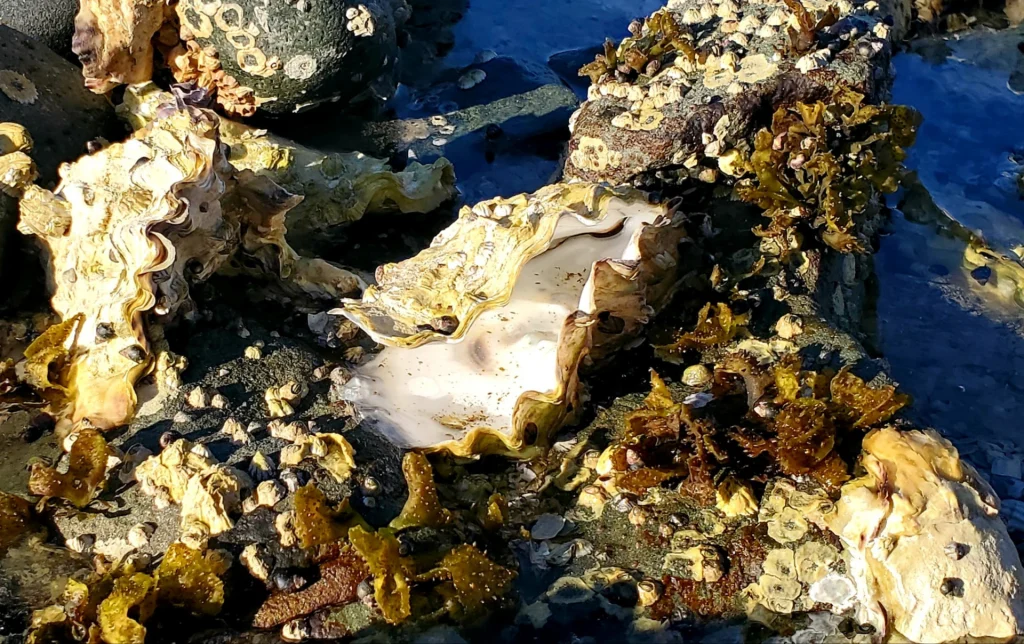In a groundbreaking discovery, scientists in Canada have identified a previously unknown RNA virus during their investigation into a mysterious mass die-off of farmed Pacific oysters (Magallana gigas). The newly found virus named Pacific Oyster Nidovirus 1 (PONV1) carries one of the largest RNA genomes ever recorded, leading researchers to propose a brand-new viral family called Megarnaviridae, or “large RNA viruses.”
The finding may help explain ongoing oyster mortality events that have puzzled marine biologists and aquaculture experts in recent years. While the exact cause of the deaths remains multifactorial, the strong association of PONV1 with affected oysters places the virus at the center of marine virology and pathogen surveillance.
Outbreak in British Columbia Leads to Scientific Breakthrough
In 2020, shellfish farms in British Columbia experienced an unexpected and large-scale mortality event among cultivated Pacific oysters. Researchers collected biological samples from 33 farmed oysters and compared them with 26 healthy wild oysters to determine the cause. Upon analyzing their RNA, scientists discovered the presence of a never-before-seen virus in 20 of the farmed oysters, while it was completely absent in the wild oysters.
This pattern strongly suggested a potential correlation between PONV1 and the die-offs. However, scientists are cautious to note that other environmental factors, such as water temperature, pollutants, and stress, may also play contributing roles in these deaths.
Unveiling the Mega RNA Genome
What makes PONV1 particularly unique is its extraordinarily large RNA genome, placing it among the largest known in any RNA virus. The scale and structure of this genome are so distinct that scientists believe it cannot be grouped with existing known virus families. Instead, they proposed the creation of an entirely new classification Megarnaviridae with PONV1 as its first member.
This virus is also notable for its complex replication mechanism and diverse set of viral proteins, further distinguishing it from common oyster viruses previously documented in marine systems.
Global Spread But Local Impact
Genomic comparisons revealed that PONV1 shares similarities with at least 15 related viral sequences found in oysters across Europe and Asia. However, unlike the outbreak in Canada, those regions have not reported similar mass die-offs. This suggests that while PONV1 and its relatives may be globally distributed, their virulence or impact may be influenced by local aquaculture practices, environmental stress, or oyster genetics.
Implications for Aquaculture Biosecurity
The identification of PONV1 raises serious concerns about biosecurity and disease control in oyster farming. The movement of juvenile oysters, known as spat, between hatcheries and grow-out sites is a common practice globally. This mobility increases the risk of spreading undetected pathogens like PONV1.
To mitigate risks, researchers are recommending several key actions:
- Development and deployment of rapid diagnostic tools for detecting PONV1 in hatcheries.
- Implementation of stricter biosecurity protocols governing the import, export, and movement of oyster seed stock.
- Introduction of routine virome screening for aquaculture systems to detect emerging threats before they become widespread.
A Complex Marine Virome Landscape
This discovery also sheds light on the complexity of the oyster virome, which consists of a vast range of viral species, most of which are not well understood. Recent surveys suggest that oysters host hundreds of unique RNA viruses in their tissues, forming a rich ecosystem of co-existing microbial life. Most of these viruses are not harmful in isolation, but under the right conditions, they may synergize with stress or environmental factors to trigger disease outbreaks.
This virome diversity highlights oysters as key indicators of marine ecosystem health and as potential reservoirs of novel viruses.
Public Health and Environmental Reassurance
While PONV1 belongs to the same broader order of Nidovirales as some known human viruses, it shows no evidence of being transmissible to humans. The virus appears highly specific to oysters and does not infect mammals or other species. There is no threat to public health from consuming oysters, though proper cooking and sourcing from regulated suppliers are always recommended.
What’s Next? Scientific Priorities
Going forward, researchers have outlined several priorities:
- Conducting controlled laboratory studies to determine if PONV1 alone can cause oyster death, or if it acts as a co-factor.
- Establishing global surveillance programs to monitor the prevalence and mutation of PONV1 and related viruses.
- Collaborating with oyster farmers and aquaculture authorities to improve pathogen reporting and emergency response protocols.
- Investigating whether environmental changes like climate change and ocean acidification are enhancing the susceptibility of oysters to viral infections.
Conclusion
The discovery of Pacific Oyster Nidovirus 1 marks a new chapter in marine virology and aquaculture safety. This large RNA virus not only challenges the scientific understanding of virus size limits but also highlights vulnerabilities in global shellfish farming systems. With growing demand for sustainable seafood, managing such emerging viral threats is vital for ensuring food security, protecting biodiversity, and supporting the livelihoods of coastal communities worldwide.



Comments (0)
No comments yet. Be the first to comment!
Leave a Comment